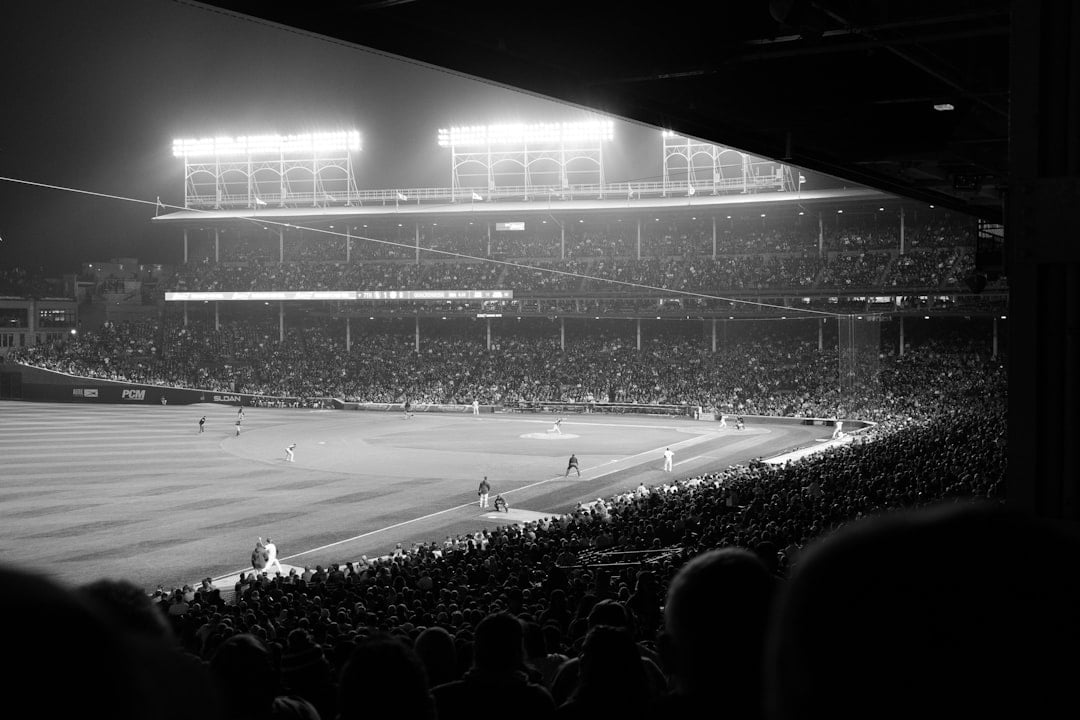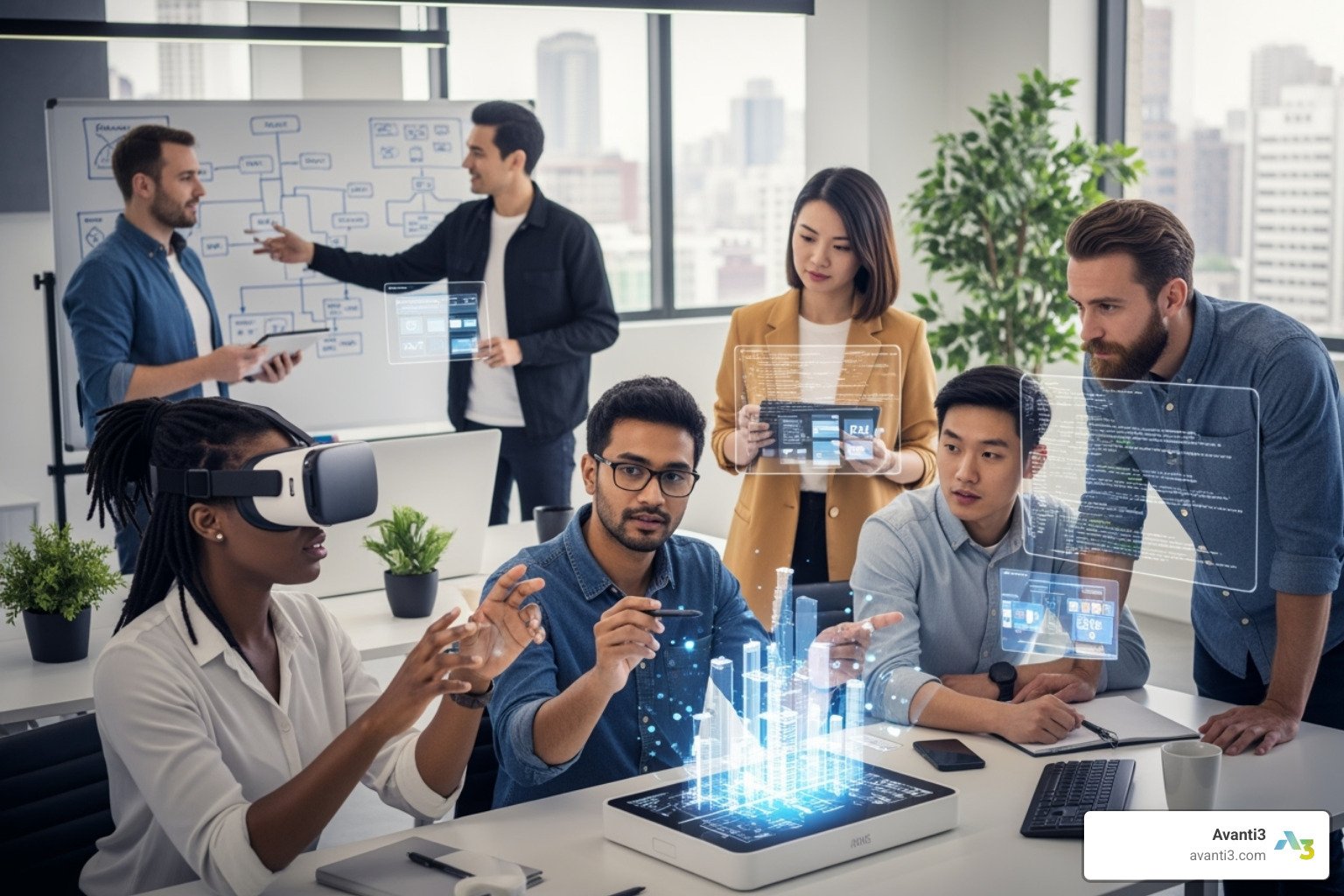Virtual concerts technology: 10 Powerful Positive Trends in 2025
The Digital Renaissance of Live Music
Virtual concerts technology refers to immersive digital platforms and tools that allow musicians to perform remotely for global audiences through streaming, VR/AR, and holographic projections. This technology creates interactive concert experiences accessible from anywhere in the world.
Here’s what you need to know about virtual concert technology:
| Feature | Description |
|---|---|
| Market Growth | Expected to increase from $98B (2024) to $297B (2030) at 20% CAGR |
| Core Technologies | Live streaming, VR/AR overlays, holograms, spatial audio, blockchain |
| Key Benefits | Global accessibility, reduced emissions (up to 47%), interactive features, new revenue streams |
| Popular Platforms | Roblox, Fortnite, Twitch, Wave, dedicated VR apps |
| Monetization | Tiered ticketing, virtual merchandise, NFTs, subscription models |
The music industry’s digital change accelerated dramatically in recent years, with virtual concert technology bridging the gap between artists and fans worldwide. What began as a necessity during global lockdowns has evolved into a approach to live entertainment that complements traditional concerts rather than replacing them.
Virtual concerts break down geographical barriers, creating unprecedented accessibility for fans who might never experience their favorite artists in person due to distance, disability, or financial constraints. For artists, these technologies open new creative frontiers and revenue streams beyond traditional touring.
I’m Samir ElKamouny AV, an entrepreneur and marketing expert who has helped numerous businesses integrate virtual concerts technology into their audience engagement strategies, creating immersive digital experiences that drive both connection and revenue.
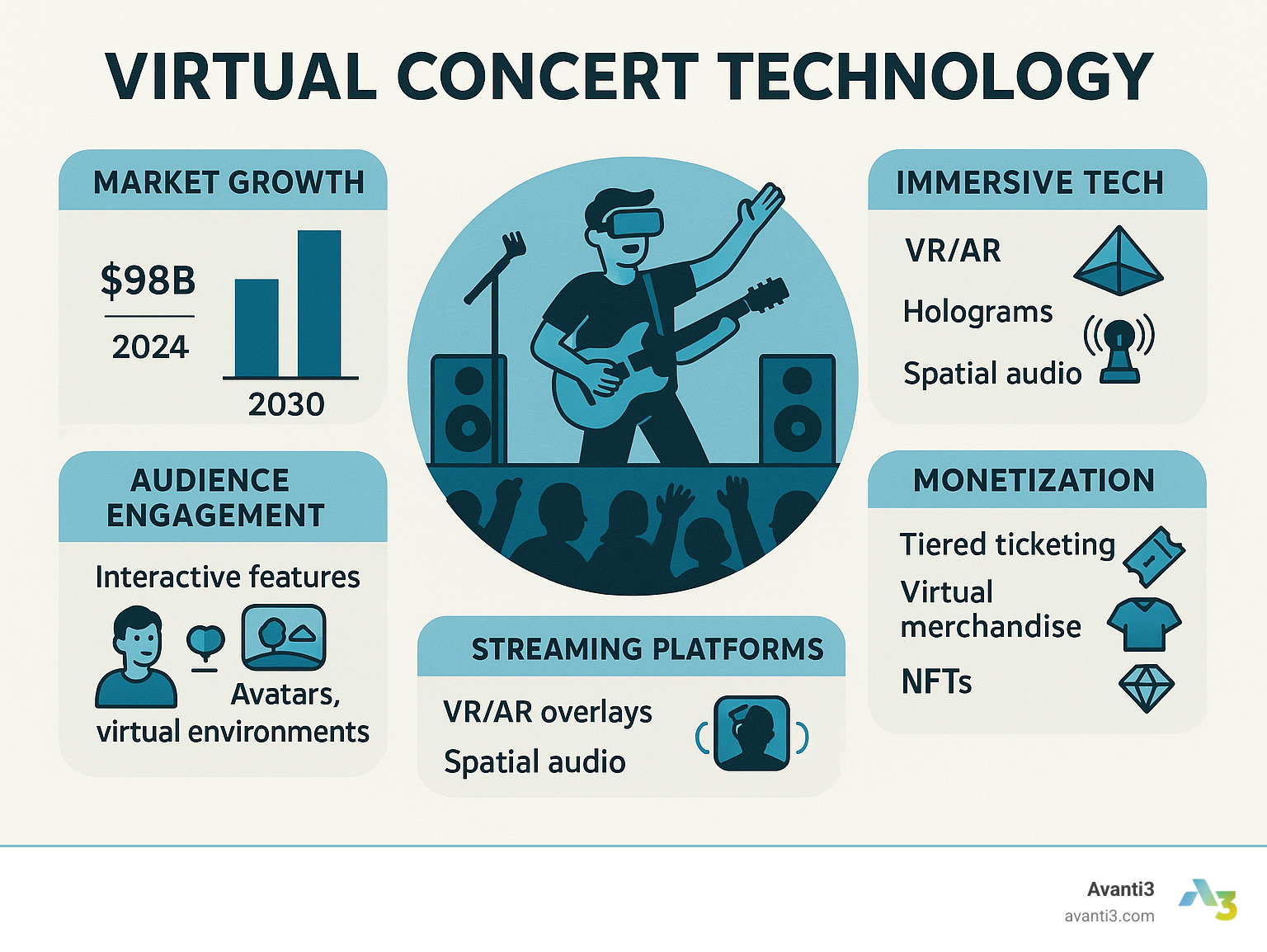
Virtual concerts technology terms explained:
– digital experience design
– live streaming technology
– virtual event engagement
What Is Virtual Concerts Technology?
Virtual concerts technology brings music to life in the digital world through a blend of hardware, software, and digital infrastructure. Think of it as the entire ecosystem that lets artists perform for fans anywhere on the planet. This technology combines high-quality video streaming, immersive audio, and interactive elements to create something that feels alive and engaging—not just a passive viewing experience.
At its heart, this technology creates spaces where music and community can thrive without physical limitations. When you attend a virtual concert, you’re experiencing a carefully orchestrated combination of live-streaming platforms, extended reality (XR) elements, motion-capture systems that translate real movements into digital ones, and spatial audio that makes sound feel natural and three-dimensional.
“The rise of virtual concerts has been nothing short of for the music industry,” notes industry expert Mark Richardson. “These aren’t just streamed performances—they’re entirely new artistic mediums that blend music, visual art, gaming, and social interaction.”
What makes today’s virtual concerts special is their interactivity. You might chat with other fans in real-time, vote on the next song, switch between camera angles, or even trigger virtual effects. Some platforms even let you move through digital venues as an avatar, dancing and interacting with other fans—something impossible with traditional video streams.
Key Differences vs. Traditional Concerts
When comparing virtual concerts technology to traditional live shows, several important distinctions emerge:
Venue Independence changes everything about how concerts work. Physical venues have walls and capacity limits—virtual spaces don’t. An artist performing virtually can reach unlimited fans simultaneously, without anyone worrying about getting a good spot or seeing over tall people.
Latency Considerations become important in the digital field. While in-person concerts happen in real-time, virtual performances involve a slight delay between when an artist performs and when you see it. The best systems keep this delay under 200 milliseconds—quick enough that most people won’t notice.
Global Reach transforms the concert experience completely. Traditional tours require artists to physically travel city by city, while virtual concerts can unite fans from Tokyo to Toronto in the same digital space, experiencing the same performance together.
Production Flexibility opens creative doors that physical reality keeps closed. Artists can perform inside volcanoes, underwater, or in space. They can transform into fantastical creatures or be surrounded by impossible visual effects—all while delivering music directly to fans.
Cost Structure works differently too. Virtual concerts eliminate many traditional expenses like venue rental, travel, and physical stage production, while introducing new costs for digital infrastructure and technical expertise.
Accessibility & Inclusivity Benefits
Perhaps the most powerful aspect of virtual concerts technology is how it opens doors for people who’ve been excluded from traditional concert experiences:
Geography-Neutral Access means fans in remote locations or countries rarely included in tour schedules can finally experience performances live. A teenager in a small town thousands of miles from major concert venues can now have front-row access to their favorite artists.
Disability Support features make music more accessible to everyone. Virtual platforms can include closed captioning for deaf and hard-of-hearing fans, customizable audio settings for those with sensory sensitivities, and freedom from the physical challenges of venue navigation.
Economic Accessibility makes concerts available to more people. Without the overhead of physical venues, virtual concerts can offer more affordable entry points while still being profitable for artists.
On-Demand Flexibility lets fans watch when it works for them. Many virtual concerts offer replay options, so whether you’re in a different time zone or have unpredictable work hours, you can still enjoy the full experience.
“Virtual concerts have opened doors for countless music lovers who would otherwise never experience their favorite artists live,” explains disability advocate Jamie Lewis. “For fans with mobility challenges, sensory sensitivities, or chronic illnesses, the ability to enjoy concerts from a comfortable, controlled environment is truly life-changing.”
The technology doesn’t just replicate physical concerts—it reimagines them for a connected world where everyone deserves access to transformative musical experiences, regardless of location, ability, or economic status.
Evolution & Milestones in Virtual Concerts
The journey of virtual concerts technology has been marked by continuous innovation and several breakthrough moments that redefined what’s possible in digital performance spaces.
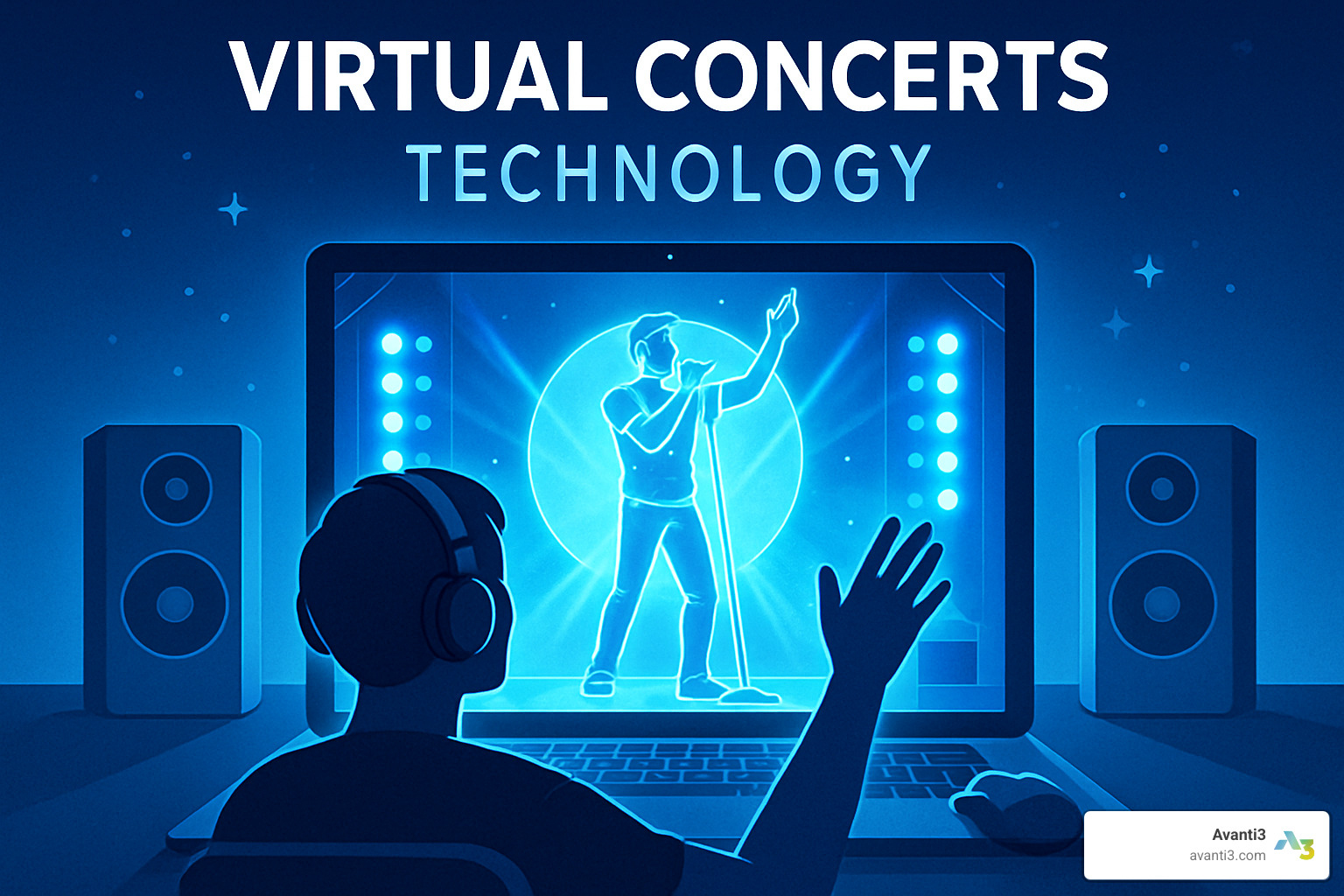
I’ll never forget the collective gasp that echoed across social media when Tupac Shakur “appeared” on stage at Coachella in 2012. That holographic performance alongside Snoop Dogg and Dr. Dre wasn’t just a technical achievement—it was an emotional moment that showed us how technology could blur the boundaries between past and present, bringing beloved artists back to life in digital form.
Years before that watershed moment, Gorillaz had already been playing with the idea of virtual performers. Their animated band members felt just as real to fans as flesh-and-blood musicians, creating a blueprint for the avatar-based acts we now see thriving in digital spaces. They proved something profound: that audiences could form genuine connections with digital identities.
The gaming world has since become the unexpected hero in this story. When Lil Nas X stepped into Roblox in 2020, a staggering 33 million viewers showed up to watch—many of them experiencing their first-ever concert. Ariana Grande took things even further with her Fortnite “Rift Tour” in 2021, changing the game into a dreamlike musical journey where fans could float alongside her through fantastical landscapes. Twenty One Pilots later reimagined their songs as interactive virtual worlds, letting fans literally play through their music.
“We’re not just watching concerts anymore—we’re experiencing them in entirely new dimensions,” says virtual entertainment producer Sarah Chen. “The lines between audience and performer, creator and consumer are blurring in ways that simply weren’t possible before.”
Billie Eilish showed us the intimate side of virtual concerts technology at CES, creating a visually stunning performance that felt both personal and boundary-pushing. Meanwhile, Coldplay demonstrated a more practical application with their Music of the Spheres World Tour, which cleverly combined physical venues with virtual access to slash their carbon footprint by an impressive 47% compared to previous tours.
With the market growing at a robust 20% CAGR, it’s clear this revolution is just getting started.
Timeline of Innovation
The evolution of virtual concerts technology reads like a fascinating tech history lesson, with each era building upon the last:
The early 2000s gave us the humble webcam era—those charmingly lo-fi livestreams where artists performed from living rooms with grainy video and basic chat functions. Despite the technical limitations, these informal sessions created surprisingly intimate connections between artists and fans.
Between 2010-2015, the HD streaming revolution changed everything. Suddenly, bandwidth improvements meant we could actually see the sweat on performers’ brows and hear every nuance in their vocals. The introduction of 360° video let us look around virtual venues, while multiple camera angles gave viewers unprecedented control over their experience.
The period from 2015-2020 brought VR/AR integration into the mix. Virtual reality headsets transported us to purpose-built digital stages, while augmented reality overlays began enhancing physical performances with digital elements only visible through our screens.
Since 2020, we’ve entered the age of the immersive ecosystem. Full-scale virtual worlds now host concert experiences where fans don’t just watch—they participate. Holographic performances have become more sophisticated, blockchain technology and NFTs have created new ownership models, and fan-driven interactive elements let audiences shape performances in real-time.
What started as a technological curiosity has evolved into an entirely new art form—one where fan communities, gaming environments, social media, and music converge to create experiences that were unimaginable just a decade ago.
Technology Platforms & Immersive Experiences
The backbone of modern virtual concerts technology consists of specialized platforms and immersive technologies that work together to create compelling digital experiences.

The Tech Anatomy of Virtual Concerts Technology
Behind every jaw-dropping virtual concert lies a symphony of technical components working in perfect harmony. Think of it as the invisible stage crew that makes the magic happen:
High-performance encoding pipelines work tirelessly to compress video and audio streams without sacrificing quality. It’s like squeezing a watermelon through a garden hose without losing a single drop of flavor—allowing crystal-clear performances to flow through standard internet connections.
The wizardry of multi-camera synchronization coordinates multiple viewpoints simultaneously. This isn’t just switching between cameras; it’s orchestrating a visual dance where every angle tells part of the story, creating a seamless experience for viewers at home.
When you see artists performing in impossible digital landscapes, that’s the work of real-time rendering engines like Unreal and Unity. These powerhouses process physics, lighting, and interactions on the fly, turning artists’ creative visions into living, breathing digital worlds.
Perhaps most crucial is the battle against delay. Advanced low-latency streaming technologies reduce the gap between performance and viewing to 200ms or less—barely the blink of an eye. This technical feat is what makes virtual concerts feel truly “live” rather than recorded.
The sound dimension can’t be overlooked either. Spatial audio processing creates three-dimensional soundscapes that respond to your movements in virtual space. Imagine hearing the bass grow louder as you virtually approach the stage or the crowd’s cheers surrounding you from all directions.
According to scientific research on immersive streaming, synchronizing these elements across millions of connections simultaneously represents “one of the most complex broadcasting challenges ever tackled.” It’s like conducting a global orchestra where every note must arrive at precisely the right moment.
Virtual Reality, AR & Hologram Stages
The frontiers of virtual concerts technology are expanding through several immersive approaches:
Virtual Reality Concerts transport you into fully realized digital venues through head-mounted displays. Slip on a VR headset, and suddenly you’re standing in front of your favorite artist—or floating above them, or dancing alongside them in a fantasy landscape impossible in our physical world. Platforms like Wave have pioneered experiences where both artists and fans appear as digital avatars, creating shared social spaces that transcend physical limitations.
With Augmented Reality Overlays, your living room becomes part of the show. Point your phone camera at your coffee table, and suddenly there’s a miniature stage with performers dancing across it. Or perhaps digital effects and visuals bloom around an artist performing in a real space, visible through your device. These technologies blend the familiar with the fantastic, creating hybrid experiences that improve rather than replace reality. Learn more about these innovative approaches on our Augmented Reality Concerts page.
The resurrection of legendary performers through Holographic Performances continues to captivate audiences worldwide. These range from relatively simple “Pepper’s Ghost” illusions to sophisticated volumetric displays that can be viewed from multiple angles without special glasses. The emotional impact of seeing departed artists “perform” again—or watching contemporary artists appear simultaneously in multiple locations—speaks to the profound connection we feel with musical performers.
Behind many of these experiences lies sophisticated Motion Capture Technology that translates real human movements into digital avatars in real-time. Artists wearing specialized suits covered in tracking markers can control virtual representations that transcend human limitations—growing, shrinking, changing, or interacting with digital environments in ways that redefine what a “performance” can be.
Hybrid Concert Venues
The most exciting development might not be purely virtual or purely physical concerts, but the thoughtful blending of both:
Modern venues are being redesigned with Physical + Digital Audience Integration in mind. Imagine attending a show where physical screens display virtual attendees dancing alongside you, or where cameras are positioned to give remote viewers the feeling of being right in the crowd. These hybrid spaces acknowledge that both in-person and digital attendees are equally valuable parts of the audience.
Mobile Event Apps improve both experiences simultaneously. Whether you’re physically present or joining remotely, these applications offer interactive features like voting on the next song, accessing backstage content, or connecting with other fans. They create a shared digital layer that unites all attendees regardless of their physical location.
The social dimension of concerts finds new expression in Virtual Lobbies and Social Spaces. These digital “pre-show” and “after-party” environments let remote attendees mingle, make friends, and share their excitement—preserving the community aspects that make concerts so much more than just musical performances.
At Avanti3, we’re passionate about creating technologies that don’t just bridge the physical and digital worlds but weave them together into something entirely new. We believe the future of concerts isn’t about choosing between in-person or virtual attendance—it’s about creating unified experiences where every fan feels equally valued, engaged, and connected to the music they love.
Monetization, Engagement & Hybrid Models
Virtual concerts technology has transformed how artists make money and connect with fans, creating exciting new possibilities that simply weren’t available in the traditional music industry.
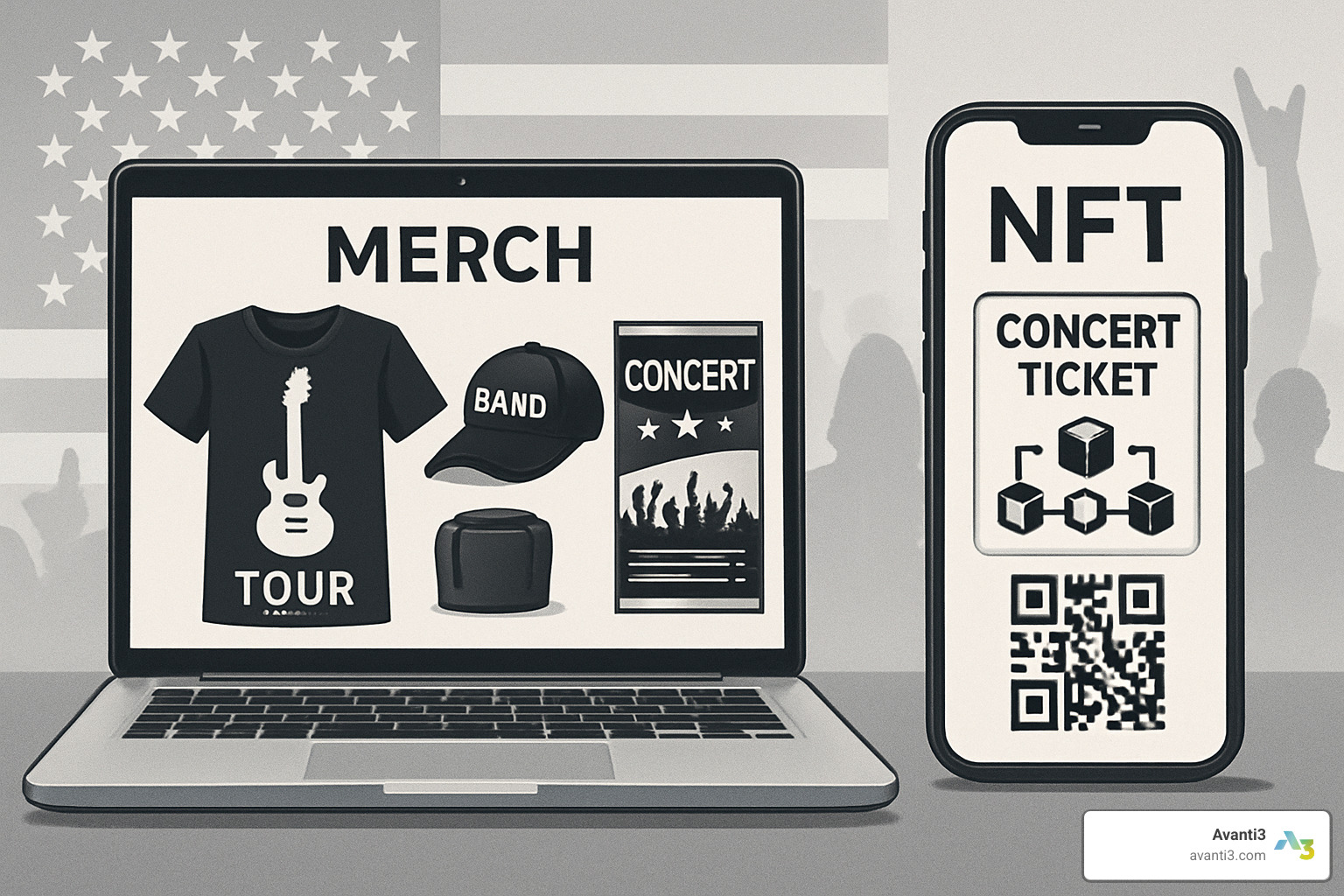
Revenue Streams for Artists & Brands
Remember when artists could only make money from ticket sales and t-shirts? Those days are long gone! Today’s virtual concert ecosystem offers so many more ways for musicians to earn a living.
Most virtual events offer tiered ticketing options – just like you’d find at physical venues, but with digital twists. Fans might pay a basic price for standard streaming access, upgrade for premium camera angles, or splurge on virtual VIP packages that include one-on-one meet-and-greets with their favorite artists.
Digital merchandise has become a huge hit too. Instead of just selling physical t-shirts, artists now offer virtual clothing for fans’ avatars, downloadable artwork, and interactive digital collectibles that commemorate special performances. Some fans love these digital souvenirs even more than physical ones – they never fade, tear, or take up closet space!
The blockchain revolution has introduced NFTs (Non-Fungible Tokens) to the concert world, creating verifiable ownership of limited-edition concert recordings, virtual front-row “seats,” and even revenue-sharing opportunities where fans can earn royalties alongside their favorite artists. It’s like owning a piece of music history that can actually increase in value over time.
Brands have finded that virtual concert spaces offer unique sponsorship opportunities too. Rather than just hanging a banner at a venue, companies can create immersive branded environments, interactive product experiences, or sponsor special effects that would be impossible in the physical world.
For artists looking to build sustainable income, subscription models provide ongoing revenue through fan memberships that include access to multiple performances, exclusive content, and special community perks. This steady income helps musicians weather the ups and downs of the industry.
Want to explore these innovative approaches further? Check out our comprehensive guide to Digital Engagement Solutions for more insights.
Enhancing Artist-Fan Connection
One of the most beautiful surprises of virtual concerts technology is how it can actually create deeper connections between artists and fans, despite the physical distance.
Live chat features transform what would be a one-way broadcast into a community experience. Fans can share their excitement in real-time, and artists often monitor these chats, responding to comments or shouting out viewers during performances. It’s like having a conversation with thousands of fellow fans while the show unfolds.
Many platforms now incorporate interactive polls where fans can vote on the next song, choose visual effects, or even influence the direction of the performance. Imagine your favorite artist asking “Should we play the acoustic version or the remix?” and your vote actually making a difference!
“The magic happens when fans feel like active participants rather than passive viewers,” explains digital experience designer Miguel Sanchez. “A great virtual concert makes you feel seen and heard, even if you’re watching from your living room.”
Backstage cameras give fans unprecedented access to the moments before and after performances that were traditionally hidden from view. These intimate glimpses behind the curtain create a sense of exclusivity and insider access that fans treasure.
For more socially-minded concert-goers, social walls aggregate posts from other viewers, creating that special feeling of shared experience that makes live music so powerful. When you see others reacting to the same amazing guitar solo or surprise guest appearance, it amplifies your own enjoyment.
Hybrid Models & New Opportunities
The future isn’t about choosing between physical or virtual concerts – it’s about blending the best of both worlds into something entirely new and exciting.
Dual ticketing approaches are becoming increasingly popular, with events designed from the ground up to serve both in-person and remote audiences. Rather than treating virtual viewers as an afterthought, smart promoters are creating custom experiences that make everyone feel valued, regardless of how they attend.
Some innovative artists are creating synchronized experiences where physical effects in venues (like lighting and pyrotechnics) are coordinated with digital effects for at-home viewers. When the confetti cannons fire in the arena, virtual confetti might rain down on your screen at home – creating a shared moment across physical and digital space.
Global simulcasts with local elements allow worldwide broadcasts to include customized touches for different regions. Artists might give special shoutouts to cities with high virtual attendance, incorporate local imagery into their visual effects, or even bring on regional guest performers for specific broadcast segments.
At Avanti3, we’re passionate about developing technologies that don’t just broadcast physical events but create unified experiences where both in-person and remote attendance feel equally valuable. We believe the most powerful concerts of tomorrow will seamlessly blend physical and digital elements, creating experiences that are more accessible, interactive, and memorable than either format could achieve alone.
Sustainability, Challenges & Future Trends
As virtual concerts technology continues to evolve, it brings both exciting environmental benefits and new challenges that we’re all navigating together in this digital music landscape.

Environmental Impact & Responsibility
Let’s talk about something really positive – virtual concerts are dramatically greener than traditional touring.
When Coldplay acceptd a hybrid approach for their Music of the Spheres World Tour, they slashed their carbon footprint by a whopping 47% compared to previous tours. That’s the kind of impact that makes a real difference! By reducing equipment shipping and giving fans digital attendance options, they showed how technology can help music thrive while protecting our planet.
There’s always a trade-off, of course. Data centers and streaming do consume electricity, but scientific research on CO₂ savings confirms that the overall environmental footprint is substantially smaller than traditional concerts. Think about it – no thousands of cars driving to venues, no massive lighting rigs running for hours, and far less physical merchandise being produced and shipped around the world.
The industry is getting smarter about this too. More platforms are embracing carbon-neutral hosting services and CDNs powered by renewable energy. Many are implementing clever optimization techniques that reduce bandwidth needs without sacrificing quality. And increasingly, virtual event platforms offer carbon calculators so artists and fans can measure and offset whatever impact remains.
As environmental consultant Dr. Elena Rodriguez puts it: “Virtual concerts aren’t just convenient—they’re becoming an essential part of the music industry’s response to climate change. Artists can reach global audiences while dramatically reducing their environmental impact.”
Future of Virtual Concerts Technology
The next wave of virtual concerts technology feels like something straight out of a sci-fi movie – except it’s happening right now!
AI is changing how we experience digital performances. We’re seeing early versions of deepfake-style recreations bringing legendary artists “back” for special performances. Visual effects are becoming responsive to the music in real-time, creating environments that pulse and flow with each beat. And soon, your concert experience might adapt to your personal preferences automatically.
Imagine walking into specialized venues where performers appear as holograms – not pre-recorded, but live from another location. These holographic touring networks will let artists “appear” in multiple cities simultaneously without the exhaustion and environmental impact of physical travel.
The audience experience is changing too. Future concerts will likely include real-time 3D scanning of remote viewers, so your digital self can actually appear in the virtual venue. Your friends might see your avatar dancing right alongside theirs!
Perhaps most exciting is the addition of physical sensations to these digital experiences. New haptic technologies will let you feel the bass through vibrating floors or wearable devices that translate sound into tactile sensations. Some companies are even exploring environmental effects like temperature changes or scent diffusion to make these digital experiences engage all your senses.
Blockchain technology is creating new possibilities for fan communities too. Token-gated experiences will offer exclusive concert access only to dedicated community members, creating deeper connections between artists and their most passionate supporters.
| Feature | Current Technology | Future Evolution |
|---|---|---|
| Audience Visualization | Chat streams, 2D video walls | 3D volumetric avatars in shared spaces |
| Artist Representation | Pre-recorded or live video, basic avatars | AI-improved avatars with emotional expression |
| Interactivity | Polls, chat, simple controls | Direct influence on music, collaborative creation |
| Monetization | Tickets, digital merchandise | Fractional ownership, creator economies |
| Sensory Experience | Audio/visual only | Multi-sensory with haptics and environmental effects |
At Avanti3, we’re not just watching these changes happen – we’re actively creating them. Our team is developing next-generation virtual concerts technology that pushes what’s possible in digital performance spaces, always with sustainability and audience connection at the heart of our innovations.
Frequently Asked Questions about Virtual Concerts Technology
Will virtual concerts replace live shows?
No, virtual concerts won’t be pushing traditional live shows off the stage anytime soon. Instead, they’re growing up alongside physical concerts as complementary experiences that fill different needs and create exciting new possibilities.
Let’s be honest – there’s something magical about traditional concerts that digital experiences can’t fully replicate. The way bass notes vibrate through your chest, the electricity of being surrounded by fellow fans, and those spine-tingling moments when artists and audience connect in real-time – these experiences have an irreplaceable quality.
But virtual concerts technology shines brightest where physical shows struggle:
When a fan in rural Australia can experience their favorite Korean artist performing in real-time, that’s accessibility that physical touring can’t match. When an artist transforms into a 50-foot digital giant performing in an underwater kingdom with gravity-defying effects, that’s creative freedom that physical stages can’t contain. When thousands more fans can attend without venue capacity limits or environmental impact concerns, that’s scalability that traditional concerts can’t achieve.
“The future isn’t either/or—it’s both,” explains music industry analyst Jordan Williams. “Artists will increasingly design their performance strategy to include both physical touring and virtual experiences, each optimized for what they do best.”
The artists who thrive will be those embracing both worlds, creating experiences that span physical and digital fields while honoring what makes each special.
How do artists earn money through virtual concerts technology?
The days of artists relying solely on ticket sales are long gone – virtual concerts technology has open uped multiple revenue streams that clever performers can tap simultaneously.
Direct ticket sales remain the foundation, with virtual shows offering various access points much like their physical counterparts. But the digital field allows for much more creative monetization approaches.
Many artists now offer tiered experience packages – from basic streaming access for casual fans to premium packages with multiple camera angles and interactive features. The digital VIPs might enjoy virtual meet-and-greets or exclusive behind-the-scenes content that physical venues couldn’t accommodate for large numbers.
Subscription models have gained traction too, with monthly membership programs offering regular performances, exclusive content, and community perks. Fans appreciate the predictable cost and ongoing connection with their favorite artists.
Digital merchandise has evolved far beyond simple t-shirt sales. Virtual goods for avatars, limited-edition digital artwork, and blockchain-verified collectibles create entirely new product categories. NFTs with verifiable scarcity allow fans to truly “own” a piece of a performance while potentially generating ongoing royalties for artists through secondary sales.
Brand partnerships take new forms in virtual spaces too. Imagine performing in a branded virtual environment, incorporating sponsored interactive moments, or creating custom digital experiences that would be impossible physically.
What’s particularly encouraging is that many artists report that well-executed virtual concerts can match or exceed the revenue from physical shows – especially when you factor out the hefty costs of touring, venues, and physical production.
What equipment do fans need to join a VR concert?
One of the beauties of virtual concerts technology is its scalability across different devices and budgets. The equipment needed really depends on which type of experience you’re after.
For basic livestreamed concerts, the barrier to entry is refreshingly low. Any internet-connected device – from the smartphone in your pocket to your smart TV – will do the job, along with a decent internet connection (at least 5-10 Mbps). Add some quality headphones or speakers if you want to improve the audio experience.
If you’re looking for a more immersive viewing experience without going full VR, consider watching on a larger screen or projector. Quality headphones or a surround sound system will make a world of difference too. Some fans even sync smart lighting systems with performances to transform their living rooms into mini-venues.
Virtual reality concerts do require more specialized equipment. You’ll need a VR headset like an Oculus Quest, Valve Index, or HTC Vive, plus enough space to move around if the experience encourages it. For PC-tethered headsets, you’ll also need a computer with decent graphics capabilities. Controllers let you interact within these virtual environments in ways that feel surprisingly natural.
Augmented reality experiences typically require just a smartphone or tablet with AR capabilities and the relevant concert app. Make sure you have enough space to move around and interact with the digital elements overlaid on your physical surroundings.
“The beauty of virtual concerts is their scalability across devices,” notes technology accessibility advocate Jamie Chen. “While premium experiences might require specialized equipment, most virtual concerts offer entry points accessible to anyone with a basic smartphone or computer.”
At Avanti3, we believe great music experiences should be available to everyone. That’s why we design our virtual concerts technology with multiple access options – ensuring that while premium VR experiences offer maximum immersion, engaging experiences remain available to fans regardless of their technology budget.
Conclusion
Virtual concerts technology isn’t just a digital alternative to traditional shows—it’s revolutionizing the entire music ecosystem. Throughout this guide, we’ve seen how these technologies tear down geographical walls, welcome fans of all abilities, create fresh revenue opportunities, and enable artistic expressions that physical venues simply can’t accommodate.
The numbers tell a compelling story: the virtual concert market is set to triple from $98 billion in 2024 to a staggering $297 billion by 2030. This dramatic growth reflects both significant industry investment and genuine audience enthusiasm for these innovative performance formats.
Here at Avanti3, we’re thrilled to be pioneers in this musical revolution. We empower artists and creators with powerful yet accessible tools—including blockchain, NFTs, and immersive AR/VR technologies—to craft concert experiences that were once the stuff of science fiction. Our platform blends cutting-edge technology with user-friendly interfaces, allowing creative minds to produce unforgettable digital performances without needing a computer science degree.
The future of music isn’t about choosing sides between physical and virtual concerts. It’s about thoughtfully blending both worlds to create rich, multidimensional experiences that reach more fans, generate sustainable income, and push the boundaries of creative expression. As technology continues its rapid evolution, so too will the possibilities for human connection, artistic expression, and shared musical moments.
Whether you’re a performer looking to expand your horizons, a brand seeking fresh engagement strategies, or simply a music lover eager to experience your favorite artists in new ways, virtual concerts technology offers a world of possibilities limited only by imagination.
Ready to create your own immersive virtual concert experience? Find how Avanti3 can help bring your vision to life by visiting our page on AR/VR immersive experiences.



